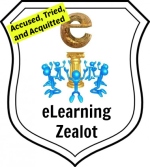I haven’t been posting here much lately, but there are so many things that I want to say about what I’m seeing in this increasingly insane world, that I feel compelled to start writing some of it here – if nothing else for my own  sanity (what’s left of it).
sanity (what’s left of it).
Have you noticed the explosion of infographics on the web lately? Are you still breathing? If so, then you’ve noticed. You can find lots of very positive (glowing, in fact) web articles about how to use infographics as link bait. That is the number one purpose for an infographic, to drive traffic to somebody’s website. I get several emails each week asking me to embed/share some infographic on my site. The emails are slowing down now since I don’t respond (positively) very often, and also because if I choose to respond it is usually to tell them how wrong they are.
Are you familiar with the Telephone game? Also called Grapevine, the Operator Game, or this culturally insensitive name. You’ve probably played this game from time-to-time, either as a planned activity or just accidentally. This is where you whisper something in the ear of the person next to you, they whisper it to the next person, etc. etc. until you get to the end of the line and a very different phrase (often, anyway) comes out of the mouth of the last person. That’s analogous to what I see happening more and more with the crazy explosion of infographics on the Internet. They take information (often, anyway) from a source and twist it around until you cannot recognize it any more.
Here’s a recent, classic example from one of the several SEO trolls (see Infographics as link bait) that are trying to make money out of being a middleman in the higher education (usually online learning) market. I won’t link to them because that could be a good thing for them if I drove eyeballs to their site. Instead, I’ll share a few snippets from their recent infographic on the Evolution of Online Schooling.
1950, really? Seems odd since Henry Ford (THE Henry Ford) died in 1947, at least if you can believe Wikipedia. Could it be that they were talking about his grandson Henry Ford II (not HF III, which is weird)? Actually, it turns out that they are talking about the Ford Foundation. But when you invoke the ghost of “Henry Ford,” you should be talking about the real deal.
Seriously? This has something to do with international education? Someone please enlighten me. One of their sources mentions CAPA, but doesn’t say anything about “ushering in international online learning.” Another source mentions CAPA, but also says nothing about what the infographic claims. There’s a reason why this doesn’t make any sense. Turns out that there is a CAPA International Education organization, founded in 1972. The only problem is that it has nothing to do with the CAPA online learning program (now called LON-CAPA) developed in 1992. And yet thousands (just guessing) of people will look at this and think they’ve learned something.
This one leaves me speechless. The first MOOC was in 1994? That’s pretty good considering that the term was coined in 2008 (see page 12). And if you’re going to proclaim something as the first thing that “sort of sounds like what we today call a MOOC,” then you can find lots of things that came earlier than this. This just shows an incredible lack of knowledge.
The little snippet above (Today) is where the Telephone Game comes into play. Into the first ear, USA Today whispers that “four big universities, operating mostly online, have quickly become the largest education schools in the USA.” Then into the second ear, Techcrunch whisper/shouts that “online education degrees now dwarf traditional universities.” At which time the owner of the third ear (that of the infographic people) ends the game by saying “Twice as many students earn online degrees as traditional degrees.” My first reaction to which is shown below:
To recap:
- USA Today uses the headline “Online Education Degrees Skyrocket” in an article about how the four institutions awarding the most degrees in the field of education are online schools. They further state that those four online institutions granted 6% of the total bachelor’s degrees in education (“one in 16”) and 9% of the total graduate degrees in education (“one in 9”). They fail to say (because they probably can’t find the data) what percentage of the total education degrees were awarded by all the online schools, or even what percentage of graduates earned their degrees online.
- Techcrunch cites the USA Today article in an article with the headline of “Online Education Degrees Now Dwarf Traditional Universities.” First of all, I’m not even sure that I can make sense of that statement: Degrees dwarf universities? Whatever. They quickly veer off on some mental gymnastics regarding the quality of online degrees.
- The infographic people cite the Techcrunch article (and all other citations have nothing to do with the number of graduates) in coming up with their incredibly inaccurate claim about how many students earn their degrees online.
- I smh and call Bull!!
Not all infographics are this poor, but more and more of them are. Guess there’s a lot of pressure when you have to churn one of these out each and every day, lest your page views go down. Oy.
Filed under: Higher Ed, Online learning | Tagged: infographics | Comments Off on I Say Bull ____ !!










